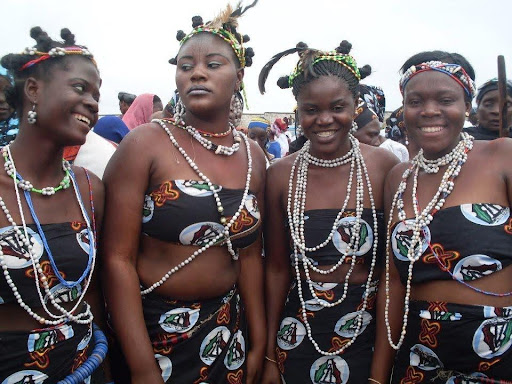The Mambila People: Proud farmers with rich heritage and enduring culture, by Salim Sani
The Mambila, also called “Norr,” meaning “the people,” in their language, are known for their farming, art, and festivals. Their way of life has survived borders, migrations and modern changes, making them one of the most unique groups in the region.
Origin
The Mambila are believed to be part of the early Bantu migrations that spread across Africa over 2,000 years ago. Oral traditions say they have been on the Plateau for more than 4,000 years.
While most live in Taraba State, some families moved into Cameroon, settling in the Ndom Plain. To the Mambila, crossing the Nigeria–Cameroon border is nothing unusual; their identity is tied to the Plateau itself.
Culture and Identity
The Mambila people live in small family hamlets, often set on hillsides. Family and community are at the heart of their culture. Both men and women share in farming, house building, bamboo cutting and even rituals linked to agriculture. Women make baskets, while men carve wood, forge tools and weave cotton.
READ ALSO: Unveiling the Tangale Tribe: A fascinating glimpse into culture, and heritage
Children do not join farm work until around the age of twelve, showing that childhood is valued.
Marriage is mostly monogamous, though some men take more than one wife. After marriage, new couples usually live near the husband’s family.

Leadership
Leadership is simple but respected. Each village has a hereditary headman, supported by a council of elders. There are also societies, mostly involving masks, that help guide young men into adulthood and keep social order.
Economy and Farming
Farming is the lifeblood of the Mambila. They grow millet, maize, rice, sorghum, yams, bananas, peppers and groundnuts. The land, blessed with rich volcanic soil and cool mountain air, allows them to grow plenty. Livestock is also kept, mainly goats, chickens and sometimes cattle.
The Mambila people are closely linked with the Fulani herders. When Fulani cattle graze in Mambila land, the people trade their crops for milk. Farming is not done alone; families work in groups and combine labour with songs, dances and rituals. To the Mambila people, farming is both survival and celebration.
Sculptures and Art
The Mambila are famous for their bold sculptures and masks. These are not simple decorations but powerful spiritual objects. The most well-known are the Tadep and Kike figures.
Tadep are small wooden carvings of humans, made to honour ancestors, protect homes, heal sickness and bring fertility.
They are kept in shrines or at the entrance of houses. Kike are larger, made from raffia palm, and placed inside granaries or sacred enclosures. Both are painted in red, white and black colours with deep meaning in their culture.
READ ALSO: The Kilba/Hoba People of Adamawa: Custodians of remarkable culture, history (pictures)
Their art style is rough and abstract. Wide eyes, bold noses and simple lines show strength rather than beauty. Many sculptures were sadly taken away by art traders around the 1960s, leaving fewer pieces behind. Still, their art remains a strong link between the people and their ancestors.

Festivals and Spiritual Life
Festivals are some of the brightest moments in Mambila life. They celebrate farming seasons, harvests, and community bonds. One famous festival is the Tawong dance, held twice a year, where young people meet, dance, and form relationships. Afterwards, men travel between villages, making friends and sharing in sports and rituals.
Masks play a big role in these festivals. Only initiated men are allowed to wear or even see the sacred masks. These masks connect the living with the spirit world.
Religion in Mambila life is a blend. Ancestors are remembered through sculpture and prayer, and some still use divination with spiders or crabs. To the Mambila, the spiritual and physical worlds remain closely linked.
Custodians of Tradition
The Mambila people are more than just a people of the Mambilla Plateau, they are a living link between past and present. Their farms feed them, their sculptures guide them, and their festivals unite them. Even with modern religions, trade and borders, they hold firmly to their traditions.
Follow the Neptune Prime channel on WhatsApp:
Do you have breaking news, interview request, opinion, suggestion, or want your event covered? Email us at neptuneprime2233@gmail.com





